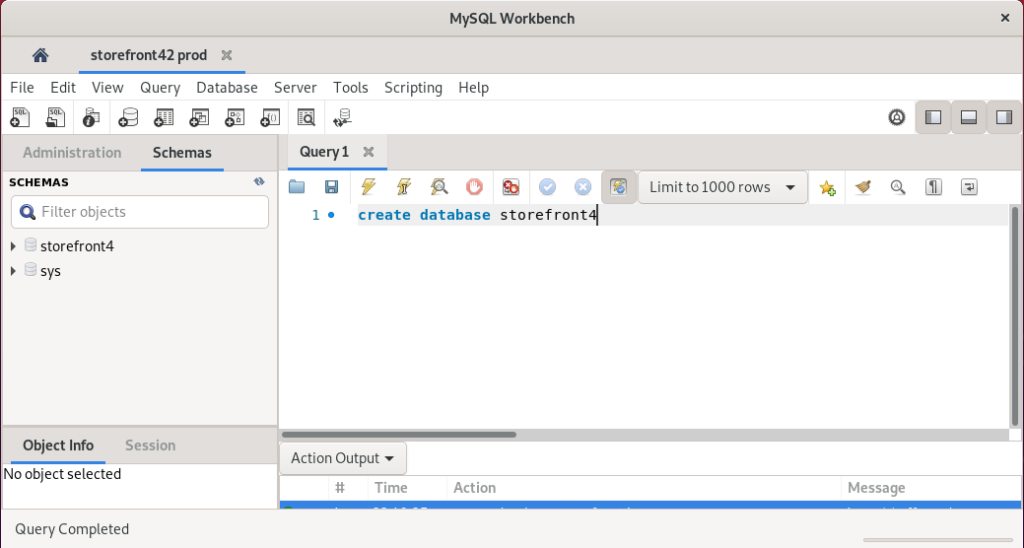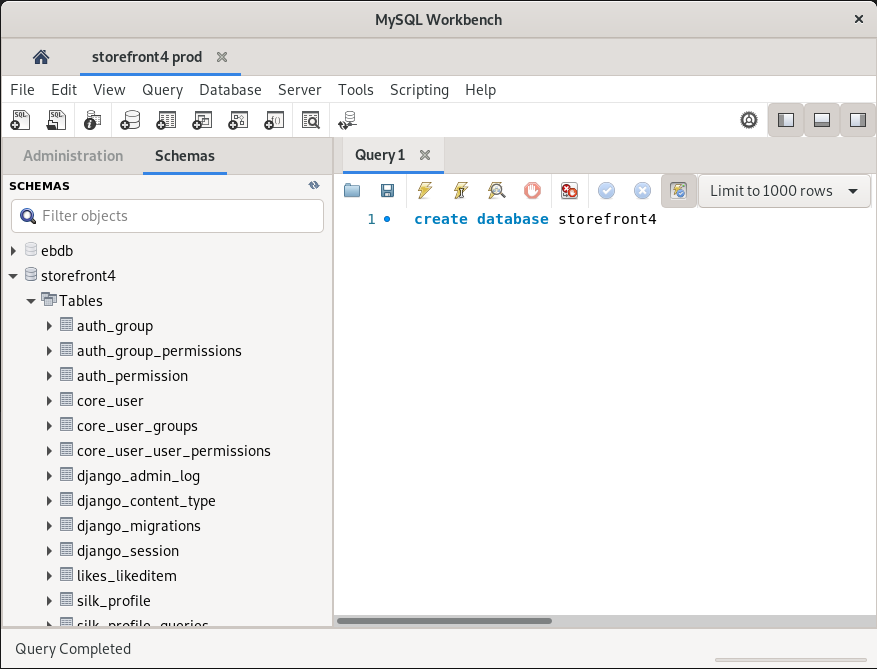This is step 4 of 6 of Hands-On Project 4 for Azure. In this step, you install updated application code on your cloud PC, then build and initialize the production database for the e-commerce demo application.
Approach
To complete this step, we will use the same approach that we used to install the application and seed the application database on our cloud development PCs. That is, we will use a combination of MySQL Workbench (from our cloud PC) and the Django migration features to create and load the initial data. The difference is that in doing so, we will connect to the production database rather than a development database. This is a bit of a shortcut. In a live production deployment, populating the database and migrating its content to the production environment is likely to be done using a more tightly controlled process. This simple approach will be sufficient for our purposes.
Upload, Install, and Verify Updated Application Code
To get ready for production deployment, the application codebase was revised to get it ready. The following changes were made prior to starting this project:
- A home page was created for the API. This page will display when a user enters the root URL of the deployed application from a browser.
- Static resources for the application (e.g. fonts, images, stylesheets, javascript modules) were collected into a single /static folder. This is a required step for Django applications to account for the difference between the development and production web servers.
- The settings.py file was split into 3 files: common.py, dev.py and production.py. This provides for different parameters to be used for the development and production environments.
- The Django debug feature was turned off for the production configuration and left on for the development configuration.
- All secrets were removed from the production configuration, and references to environment variables were added. As a result, no production secrets would ever be pushed to a source code repository.
- The gunicorn web server module was included in Pipfile. This is the web server we will be running in production. We include in the pre-production application so that we can verify that the app runs successfully using the production web server software.
The starting point for this project contains the above changes and can be downloaded from here:
After downloading the code, upload it to your cloud development PC and install it the same way that you did in Project 2, but change all of the names to storefront4 from storefront3. The instructions to complete this are here:
Deploy a Demo Application to Your Cloud PC
Within the above instructions, you only need to complete the steps through “Start the Test Web Server and Tour the Application”. There is no need to do a thorough test of the web API. Note that to modify the Django development settings, you will be making the changes in /storefront/settings/dev.py. Also, you will be creating a MySQL database called storefront4 on your cloud PC. This is intentionally kept separate from the storefront3 database.
Verify that Gunicorn Can Run Successfully
Our Django configuration contains a Python file (/storefront/wsgi.py) to run the application under gunicorn. Since we will be running gunicorn in production, we should verify that the application runs successfully under gunicorn on the cloud development PC. In the VS Code terminal, run the following:
gunicorn storefront.wsgiThe web server should start successfully:

Create the Production Database Within the Database Server
We previously verified that we could connect to our production database using MySQL Workbench. Reconnect to the production server, and create a new database named storefront4. After creating the database and refreshing the window, we can see that the storefront4 schema now exists:

Populate the Production Database
Once you have a connection to the production database, you can populate the database the same way you did the development database on your cloud PC’s localhost. Begin by modifying the development database settings in /storefront/settings/dev.py to point at the production database:
DATABASES = {
'default': {
'ENGINE': 'django.db.backends.mysql',
'NAME': 'storefront4',
'HOST': 'uwmmsdhop42.mysql.database.azure.com',
'USER': 'storefront',
'PASSWORD': '<production password>'
}
}
The above code block shows my configuration (minus the production password). Save this configuration, then in the VSCode terminal virtual environment, run:
python manage.py migrateYou can then use MySQL Workbench to verify that the tables were created successfully:

Once this is finished, you can complete the setup of the production database with the following steps:
- Open the seed.sql script from ~/storefront3/data/ and run it against the storefront4 database to load the seed data.
- Return to VS Code and run python manage.py createsuperuser to create the admin account in the production database.
Production Database is Now Ready
Once you get this far, the production database is ready for the application deployment.